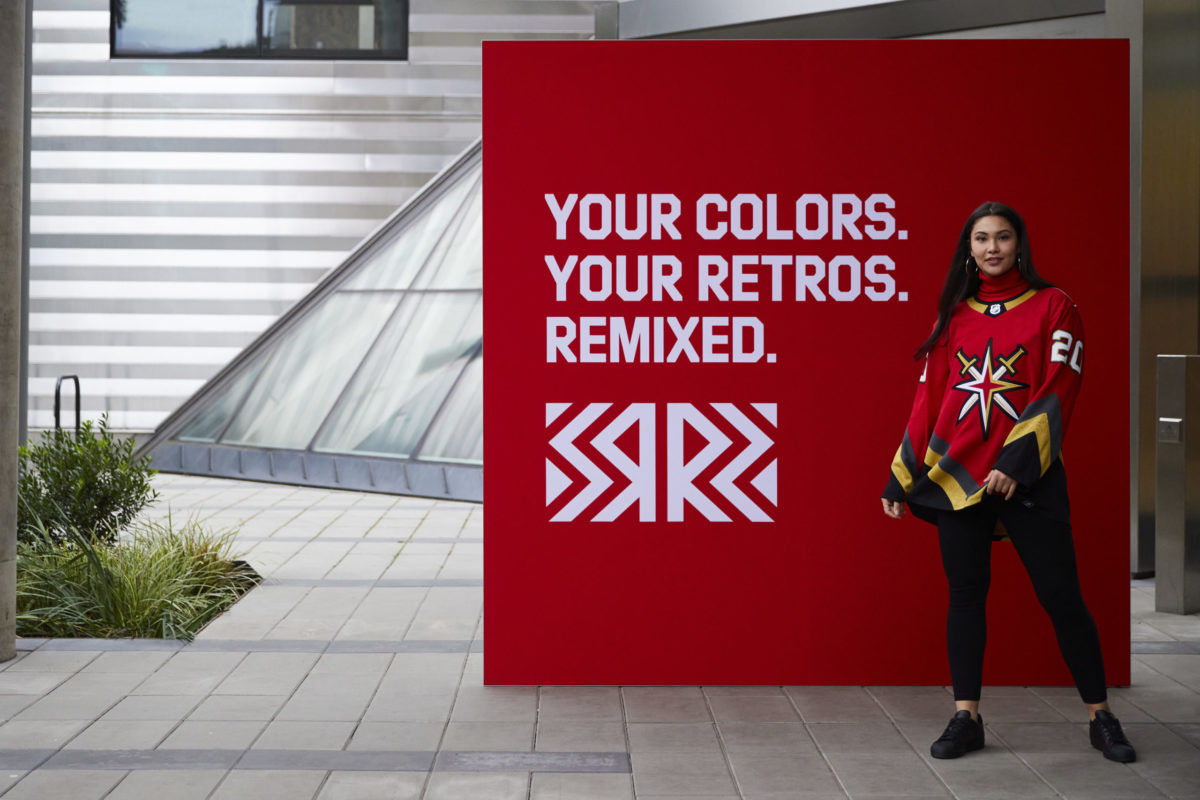The NHL finally revealed the long-anticipated Reverse Retro jerseys, and all in all, it was a warm reception. While a few may have looked like an assignment someone had forgotten about until the night before (sorry, Islanders), the collection of jerseys paid homage to the rich history of each franchise. (from ‘Check out the Golden Knights’ new ‘Reverse Retro’ jersey,’ Las Vegas Review-Journal, 11/16/2020) Yes, even the newest one. Though there may not have been an abundance of Vegas Golden Knights history, their iteration of the Reverse Retro kit is a beautiful tribute to hockey’s history in the desert.
Thundering Details
The league’s official release on the inspiration for the jerseys describes the Golden Knights’ shirt as “paying homage to the teams and players that paved the way in Vegas,” a sentiment clearly seen in the details, both big and small, that adorn the new kit.
The distinct striping around the edges of the jersey is a direct nod to the first Vegas team to make a national splash in the hockey scene: the Las Vegas Thunder. The Thunder competed in the International Hockey League from 1993-99 and finished their inaugural season with the league’s best record (52-18-11), good for 115 points.
In case that sounds familiar, it is nearly the same path the Golden Knights followed when they entered the league. They finished their inaugural 2017-18 season with a record of 51-24-7, good for 109 points and a Pacific Division Championship.
The nod to the Thunder doesn’t stop there. The inside of the collar is emblazoned with ‘95, a tribute to both the Thunder’s 1995-96 season, their best ever, with 122 points. But the ‘95 is also a reference to another hockey pioneer who called the desert home…
Manon Rhéaume’s Reach
‘95 has even more significance past the Thunder’s best season; it is an acknowledgment of one of the greatest pioneers for women’s hockey, and women’s sports in general: Manon Rhéaume.
Many know Rhéaume as having made history as the first woman to suit up for an NHL team; after all, that’s why her gear is in the Hockey Hall of Fame. But the truth is that she was making the hockey world take notice long before putting on the pads for the Lightning. It was in the 1994-95 season that she played for the Las Vegas Thunder. Seeing as designers of the Golden Knight’s Reverse Retro strip were “inspired by the pioneers of hockey in the desert,” it would have been hard for them to overlook the significance of Rhéaume’s time in the city.
Wrangler Red
At first glance, it might be hard to understand the vibrant red colour that makes up the base of the Vegas shirt. After all, there is but a whisper of the colour in the team’s secondary crest. But the hue is a nod to the Las Vegas Wranglers, who played in the ECHL, out of Orleans arena, from 2003 to 2013.
Despite not having been part of the league for over seven seasons at this point, the Wranglers still have the highest winning percentage in ECHL history, at .676. They were also the first team in ECHL history to rack up three consecutive 100-point seasons.

It’s not hard to see the parallels between the Wranglers and Golden Knights, with both teams enjoying incredible success in such short time frames. And that makes it obvious as to why the team went with red as the basis for their new jersey, as the Wranglers laid the groundwork for how to succeed on ice in a desert.
Second Logo Spotlight
The final piece of the Reverse Retro puzzle is the use of the team’s secondary logo as the crest. The crossing swords behind the red star form the same shape as the star on the iconic ‘Welcome to Fabulous Las Vegas’ sign. I think highlighting the secondary logo is a beautiful touch, especially because of how iconic that sign is, and this is a jersey touching on numerous icons of Vegas hockey.
On the whole, the Golden Knights’ piece in the Reverse Retro is a stunning tribute to the history that led us to the Knights themselves. The various stages of hockey history represented are a reminder that hockey in the desert isn’t necessarily a new thing, but it certainly has been elevated by the league’s youngest active franchise.